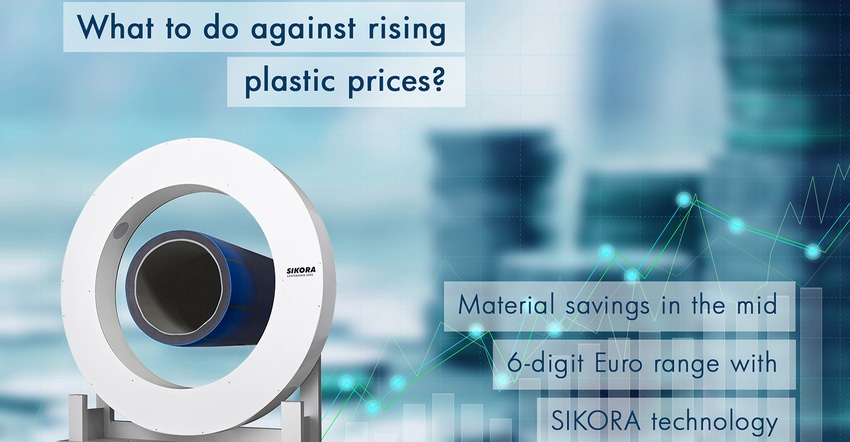The End of the Extrusion Line Is Where Savings Begin
Sikora explains how its extrusion measurement and control technology can contribute to a significant reduction in scrap and raw material costs.
May 26, 2022

At the end of a tube and pipe extrusion line lies the beginning of a plethora of opportunities to ensure product quality and reduce raw material costs, according to Sikora. And if you don’t believe the German manufacturer of auxiliary equipment, maybe you’ll be swayed by the F.A.Z.-Institut, a subsidiary of the Frankfurter Allgemeine Zeitung media group, which recently named Sikora an innovation leader in the measuring and testing category.
Taking the measure of an extrusion system
Measuring tube and pipe dimensions after the extruded product exits the vacuum tank is common practice, but a comparison of product parameters at the end of an extrusion line can also be beneficial, according to Sikora. A Laser-series gauge head at the end of the line when the product has already crystallized can, for example, collect information about the shrinkage behavior of the tube or pipe and provide an additional measure of ovality. Moreover, said Sikora, the Laser gauge head can inspect the product for defects, a final quality control check. Depending on customer requirements, two to 12 measuring axes can be processed. Sikora has developed a tool that allows customers to calculate how many axes of measurement they will need for 100% coverage.
|
Laser gauge heads on an extrusion line detect defects on pipe surfaces. |
Reducing startup scrap
Real-time measurement can also reduce scrap and save processors money in raw material costs, according to Sikora. As the measured values are available immediately after switching on the system, extrusion tools can be centered quickly and, thus, startup scrap is reduced. Optimized centering using Sikora’s Centerwave 6000 measuring system could result in material savings of approximately 5%, said the company. It’s not an insignificant amount as resin prices continue to rise.
In addition, real-time measurement enables a reduction in wall-thickness safety margins. The savings can run in the mid six figures, depending on tube or pipe type, according to Christian Schalich, Head of Sales - Hose & Tube. "As plastic prices continue to rise, the savings are even higher," adds Schalich. "Before the price increase, a Sikora measuring system paid for itself within eight months. Today — with approximately 35 % higher material costs — manufacturers even achieve a return on investment in less than six months," said Schalich.
Here again, Sikora has developed a tool to calculate potential savings in terms of material costs, production time, and CO2 emissions.
Sikora named 2022 innovation leader
In recognition of its focus on research & development — it typically invests about 10% of its turnover in R&D — Sikora has been named a 2022 innovation leader by Germany’s F.A.Z.-Institut. Winners in numerous technology categories are determined based on the number of patents a company has filed along with how often a patent cites another patent family. Sikora received the award in the measuring and testing category.
Sikora will exhibit at K 2022 in Düsseldorf, Germany, from Oct. 19 to 26. Make a date to visit the company at stand F14 in Hall 10.
About the Author(s)
You May Also Like





